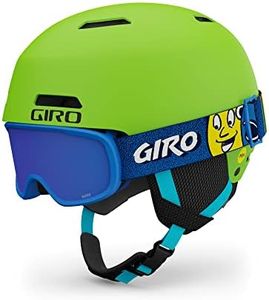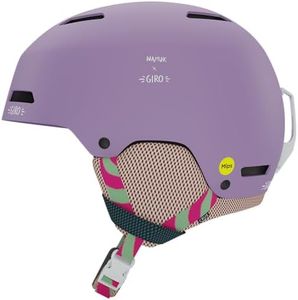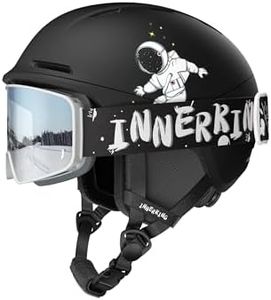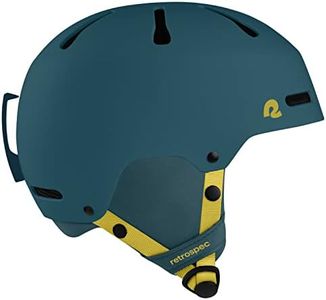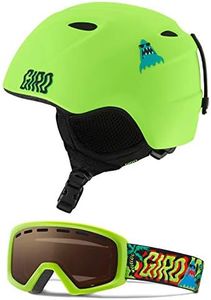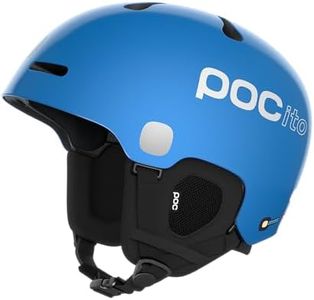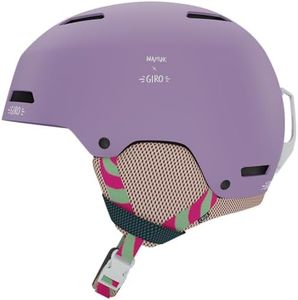We Use CookiesWe use cookies to enhance the security, performance,
functionality and for analytical and promotional activities. By continuing to browse this site you
are agreeing to our privacy policy
10 Best Kids Ski Helmets
From leading brands and best sellers available on the web.Buying Guide for the Best Kids Ski Helmets
Choosing the right ski helmet for your child is essential to keep them safe while they enjoy skiing or snowboarding. A helmet not only protects their head from injuries but also keeps them comfortable in cold weather. When buying a kids' ski helmet, it's important to think about fit, comfort, and features that will match your child's needs and activity level. Focus on the essentials and make sure you involve your child in the fitting process to help them feel comfortable and excited to wear their helmet.Fit and SizingFit and sizing refer to how well the helmet sits on your child's head. A helmet that fits properly will give the best protection; too loose and it may not stay in place, too tight and it can be uncomfortable. Helmets are usually sized by head circumference, so measure around your child's forehead and choose accordingly. Most helmets come in ranges like Small, Medium, or by centimeters. For very young kids, look for adjustable fit systems that let you fine-tune the fit as they grow. When trying on a helmet, make sure it sits snugly but not painfully, and doesn't move easily when your child shakes their head.
Safety CertificationsSafety certifications ensure that a helmet meets certain safety standards for impact protection. In most countries, ski helmets for kids should have certifications like ASTM F2040 or CE EN1077. This spec is important because it guarantees the helmet has passed tests for safety. Always check for a label or information about certification when choosing a helmet, as uncertified helmets may not provide enough protection. For your child, only select helmets that clearly state they meet one of these safety standards.
VentilationVentilation refers to the number and design of vents in the helmet, which allow air to circulate. Good ventilation helps keep your child comfortable by preventing overheating and reducing sweat. Helmets can have no vents, some fixed vents, or adjustable venting systems. Fewer vents mean more warmth but might be too hot for active kids, while more vents offer better cooling. If your child tends to get warm or skis in spring conditions, more or adjustable vents are ideal; for cold or less active days, simple fixed vents may be enough.
WeightHelmet weight is how heavy the helmet feels on your child's head. A lighter helmet is generally more comfortable and less tiring for kids to wear all day. Children are often sensitive to weight, so lighter models can be helpful, especially for younger or smaller kids. If your child often complains about wearing a helmet, look for lighter options, but always ensure safety features are not sacrificed for lower weight.
AdjustabilityAdjustability means how easily you can customize the fit of the helmet. Many children's helmets now include dials, sliders, or adjustable straps to fine-tune the fit as your child grows or wears different hats underneath. This is a key spec because a helmet that grows with your child can last longer and stay comfortable. Choose adjustability features if you want flexibility or expect your child to use the helmet over several seasons.
Comfort Features (Padding and Liners)Comfort features include the internal padding and removable liners found inside the helmet. Padding affects how the helmet feels and can absorb some moisture from sweat. Removable or washable liners can help keep the helmet fresh. If your child will spend long hours on the slopes, look for soft, thick padding; for occasional use, basic comfort features may be enough.
Goggle CompatibilityGoggle compatibility is about making sure the helmet fits well with your child's ski goggles. Some helmets have special goggle clips or shapes that stop the goggles from slipping and fill gaps to keep the forehead warm. If your child already has goggles, bring them along to test the fit with the helmet. A good fit improves both protection and comfort, especially in windy or snowy conditions.


